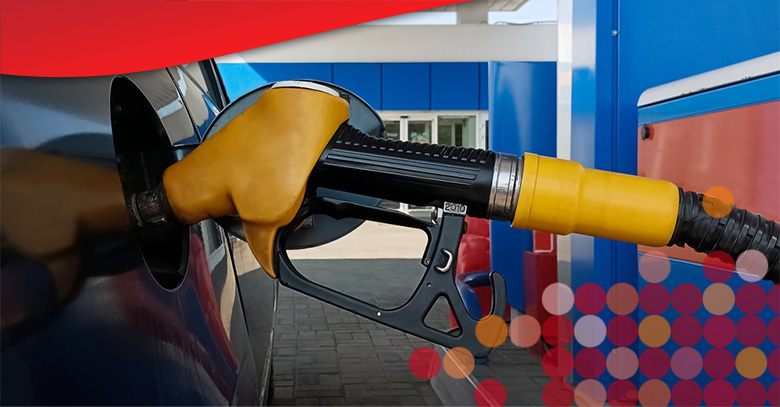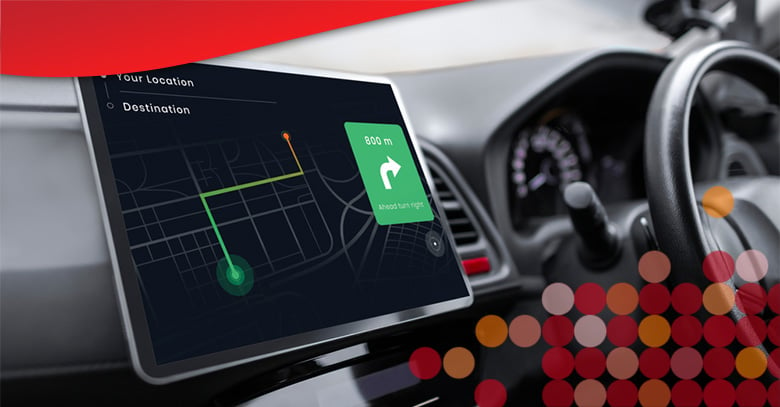Fleet managers face many challenges, including rising insurance costs, looking for driver shortage solutions, the ongoing struggle to obtain high-quality data, and turn data into actionable information. Companies also have limited resources, which they must use to conduct thousands of evaluations regularly.
These conflicting obligations commonly signify a more significant need for advanced technological solutions. But what do those solutions look like?
3 Ways to Improve Driver Behavior Scoring
Improve Your Data Collection Process
One of the most significant issues with the review process is obtaining reliable data.
To expand your data set sourcing and optimize your actionable information, you should include data taken from multiple sources, such as:
- Location — GPS data is the foundation of understanding movement. It helps with operational metrics and on-time performance as well as driver behavior discussions in the context of vehicle location.
- Vehicle — Most telematic devices use data collected from the vehicle. However, in addition to information about driver behavior including aggressive driving and speeding, this should also include details about the condition of the vehicle, and fuel consumption.
- Environmental — Tourmo enables companies to gain access to environmental data weather, elevation, vehicle type, traffic and other important factors, which gives evaluation teams an acute sense of context when analyzing driving behavior.
- Phone or Mobile Device — interact with and get feedback from drivers throughout their day.
- Disparate Data Sources — The ability to integrate data collected from various systems is a challenge many enterprise fleets have difficulty overcoming within reasonable time and expense. Using AI, like Tourmo, allows analysis across multiple sources producing valuable and complete information to drive prioritization and decisions within your operation.
Most importantly, Tourmo enables companies to unify and correlate data from existing investments to produce the best insights to improve driver behavior.
Use Advanced Data Analytics
Having data is one thing; turning it into information and knowing what to do with it is another. Unfortunately, companies lack the resources to sort through mountains of data once they become available. This process represents yet another bottleneck for evaluation of enterprise operations.
The result is that evaluations can be incomplete, inaccurate, and/or delayed, leaving drivers lacking the necessary feedback to reduce their risk.
Advanced technology solutions, like Tourmo, can help you process data into information and detect risky behavior in real-time. The best driver behavior scoring solutions should analyze:
- Behavioral — data analysis should be able to identify risky driving behavior for correction. This includes notable instances of driving behaviors such as rapid acceleration, harsh braking, cornering, swerving, phone handling, and speeding as well as tendencies for risk.
- Time & Location — this data should point fleet managers to any trends in driving behavior by including time and location data. Visibility of the location of the risky or aggressive driving behavior will help the driver feedback and coaching process, expediting driving behavior improvement.
- Comparable drivers — utilizing a population-based approach will allow fleet managers to identify the riskiest, and highest performing drivers, in a fair and unbias manner across their organization.
- Context-aware — Tourmo’s patented contextualized analytics and technology can calibrate and normalize telematics data in context with driving environment factors such as weather, topography, and population and traffic density to build rich and meaningful driver evaluations.
Your fleet management team will better understand how well your drivers perform thanks to this in-depth and contextualized information. Once this information becomes available, the feedback process will be more structured and effective.
Automated Feedback & Coaching
Understandably, enterprise fleet management teams struggle to deliver feedback in a timely manner when employing thousands of drivers. While many teams prefer having 1:1 meetings with each driver, this process is challenging, if not impossible, to scale.
Relying on one-on-one coaching also misses opportunities for a driver to improve on their own when made aware of risky behavior and tips on how to address it. Despite good intentions, one-on-one coaching as the only method can harm driver retention due to infrequent feedback and primarily negative interactions.
You can make the following adjustments to your feedback and coaching procedures with Tourmo's assistance:
- Automation — While conventional wisdom recommends holding regular 1:1 meetings with every driver, research indicates that it's more advantageous to reserve these meetings for prolonged patterns of concerning behavior or individual praise (but don’t forget praising publically!)
Automated feedback that alerts drivers to acceptable performance or commends them for appropriate behavior produces better outcomes for all other situations. Data confirms, the majority of drivers want to improve, respond better to receiving system-driven feedback, and will improve if given the chance and they know the company takes the program seriously.
- Incentivize Good Behavior — All employees generally want to improve at their jobs, drivers are no different. Recognizing and rewarding positive behavior is a great way to reinforce the principles from their training and are executing regularly. Positive recognition and rewards are motivational to continue to drive with exceptional care. The coaching process will help drivers understand their opportunities for improvement and, upon improvement they should be recognized for improvement further emphasizing the importance of their improvement.
- Gamification — Having goals and comparison to peers is the basis for all competition. With multiple components in a scoring system and ability to see individual and peer performance in the respective components, gamification naturally occurs. Drivers will compete against themselves and other drivers creating continuous improvement opportunities with everyone competing in various ways. Couple the continuous improvement with positive recognition and drivers will improve while feeling proud and appreciative for achieving their objectives!
How Does AI Improve Driver Behavior Scoring?
The traditional methods of driver evaluation consume valuable time and energy. Attempting a 1:1 with every driver is inefficient and often leaves drivers without needed, frequent feedback.
While powerful AI models can do the heavy lifting of data collection/analysis, they can still leave fleet managers to sift through reporting to find actionable information. Tourmo’s AI-powered platform combines AI-powered analytics with workflow automation to create actionable information and tasks to not only produce valuable data but initiate action and track that action actually took place.
There are several advantages to using this advanced approach to enhance driver behavior:
- Up to 25% fewer accidents
- Reduced insurance premiums and fuel/maintenance costs
- Up to 50% increase in driver engagement and satisfaction
- Reduction in driver churn due to positive recognition and gamification
Tourmo AI — Advanced Solutions for Driver Behavior
The first step to improving your driver behavior scoring is starting with the right tools. Tourmo’s AI-powered platform will enable your team to streamline the entire review process, combining machine learning-based collection, analytics, and information with automated workflows.
Our automated fleet driving monitoring workflows will enable you to immediately identify and address risky behavior across all your drivers, resulting in fewer accidents, lower costs, and higher engagement.
Author:
Matt Braun leads the Solutions Consulting team at Tourmo. He helps Tourmo customers better understand their challenges and uncover creative, efficient solutions to improve their operations. He guides them through the benefits provided by mobility workflow automation, AI-powered tools and reports, and the value of data science. Matt’s focus on clear, actionable, and effective information is foundational to all prescribed solutions. Matt came to Tourmo after 15 years as Sr. Director of Performance Improvement at First Student –– an organization operating a fleet of more than 40,000 vehicles. He holds a Bachelor of Business Administrations from the University of Cincinnati and a Masters of Business Administration from Thomas More College. Matt and his wife live in the Cincinnati area where Matt coaches most of the sports of their 2 sons and daughter.


 Matt Braun
Matt Braun



